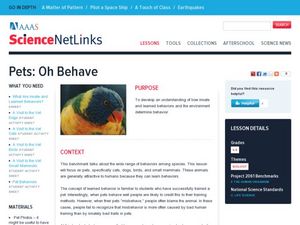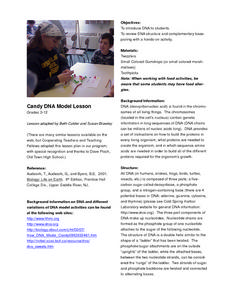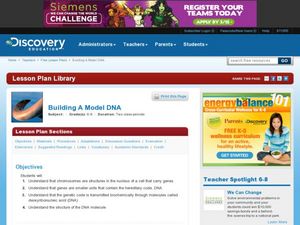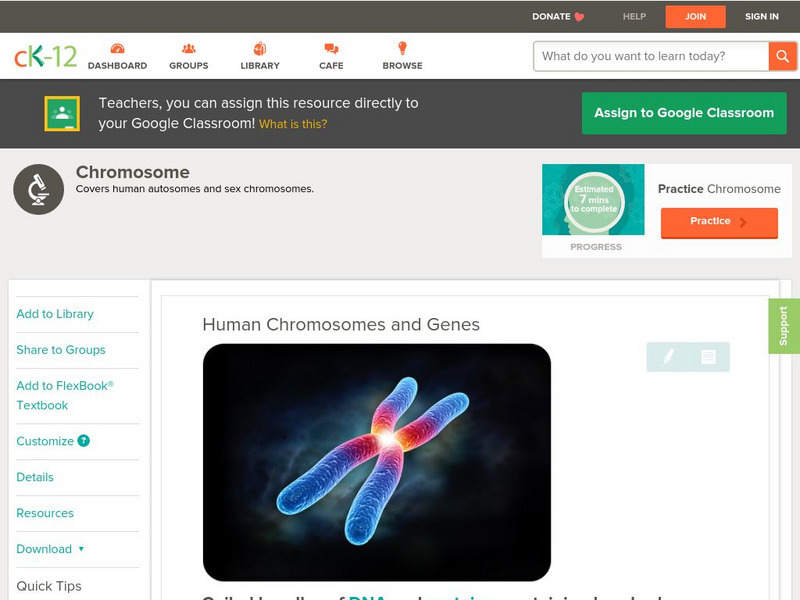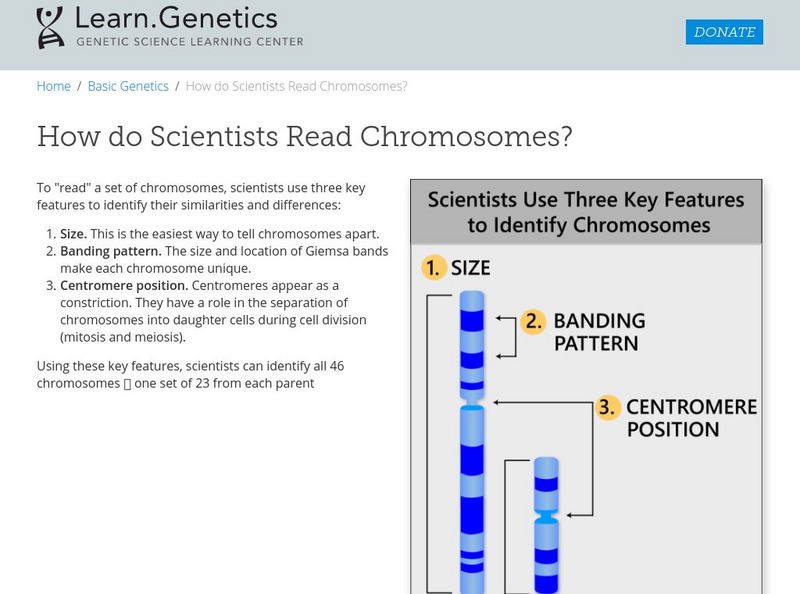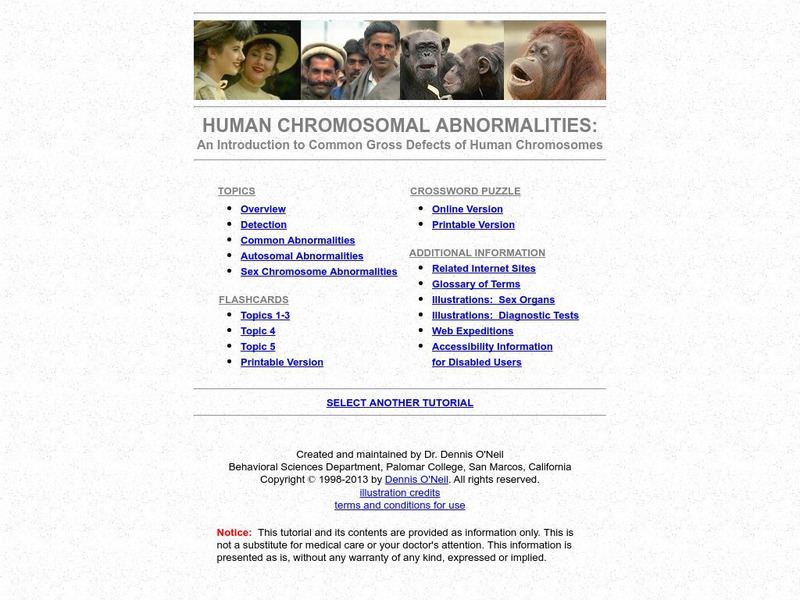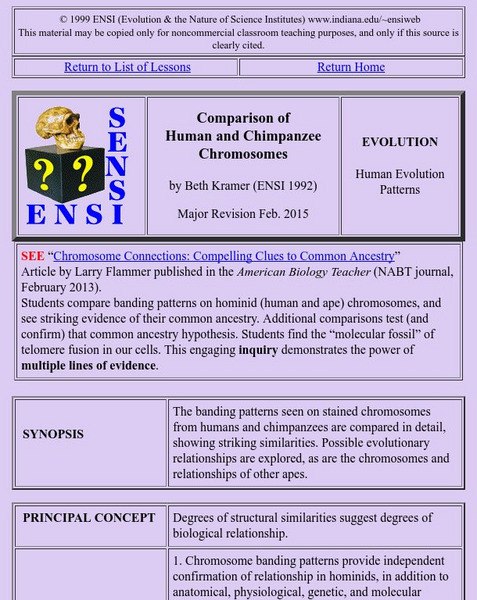Curated OER
Pets: Oh Behave
Students develop an understanding of how innate and learned behaviors and the environment determine behavior.
Curated OER
Cell Division and Differentiation
Tenth graders investigate about mitosis, meiosis, and cell differentiation and their purposes and implications in the development and functioning of multicellular organisms. Students use individual journals and a variety of hands-on...
Curated OER
Improving Literacy in the Biology Classroom via Genetic Disorders
Students read, write and reflect on Science articles, this approach will promote both literacy and critical thinking skills. Critical thinking skills learned in the science classroom from these activities will impact students in many...
Curated OER
Wearing My Genes: Basic Principles of Heredity
Students explore heredity. In this science lesson plan, students examine what heredity is, distinguish the difference between the dominant and recessive genes, explain the difference between phenotype and genotype, and predict the...
Curated OER
Using VNTR Analysis to Identify Guilt at a Crime Scene
Students collect DNA from cheek cells. They compare and contrast the processes of DNA replication and PCR. They discuss how this information can be used to determine guilt at crime scenes.
Curated OER
Taxonomy
In this biology worksheet, students complete a crossword puzzle with 39 questions on taxonomy. They identify the different classification systems used in biology.
Curated OER
Candy DNA Model Lesson
Students explore DNA structure using materials such as Twizzlers, small colored gumdrops and/or toothpicks.
Curated OER
DNA Blueprint for Life
Students isolate DNA from different food sources. In this biology lesson, students research DNA extraction. They analyze DNA stands collected from the lab, and compare the differences between each.
Curated OER
More on Mitosis
In this mitosis worksheet, students review the 4 phases of mitosis: prophase, metaphase, anaphase, and telophase. This worksheet has 17 fill-in-the-blank statements.
Curated OER
Who's the Father?
Learners analyze gels to determine parentage in this lesson about scientific evidence, investigation, and DNA concepts. The lesson includes a pre-activity worksheet, a final individual assessment, and student handouts for in-class...
Curated OER
Cell Structure and DNA
Sixth graders identify, locate and describe the function of the parts of a cell. In groups, they state the five stages of mitosis and put them in the correct order. They are introduced to the structure of DNA and mRNA and how they...
Curated OER
Building a Model DNA
Students explain the function of DNA in the body. In this biology lesson plan, students build a DNA model using simple materials. They demonstrate how bases pair up in the helix.
Curated OER
Here's Looking at You
Students assess some common inherited traits which are easily observable and note their phenotype for the trait. Students compare their phenotypes to those of their parents and attempt to describe the pattern and manor of inheritance.
CK-12 Foundation
Ck 12: Biology: Human Chromosomes and Genes Study Guide
This comprehensive study guide covers the main terms and concepts needed for a unit on human chromosomes and genes.
National Health Museum
Access Excellence: Human Chromosomes
This map from Access Excellence shows human chromosome pairs. The site includes a short description of chromosome structure, staining of chromosomes and karyotypes.
CK-12 Foundation
Ck 12: Biology: Human Chromosomes and Genes
[Free Registration/Login may be required to access all resource tools.] Covers human autosomes and sex chromosomes.
National Institutes of Health
Ncbi: Human Genome Resources
This site covers information on all the human chromosomes, has interesting illustrations as well.
BiologyWise
Biology Wise: Facts About Human Chromosomes
Presents information about human chromosomes, their structure, and genetic disorders that can result from mutations.
Genome British Columbia
Genome British Columbia: Chromosome Fundamentals
Understanding how chromosomes, DNA and genes all work together can be confusing. The author has explained how chromosomes fit into the picture in clear language.
Open Curriculum
Open Curriculum: Human Chromosomes and Genes
This article discusses the importance of characterizing the human genome.
University of Utah
University of Utah: Learning Center: learn.genetics: Scientists Read Chromosomes
Find out how scientists read human chromosomes using three features: size, banding pattern, and centromere position.
Other
Genome British Columbia: Chromosomes
This is an excellent PowerPoint presentation that explains what chromosomes are. Many slides are also accompanied by detailed notes.
Palomar Community College District
Human Chromosomal Abnormalities (Tutorial)
A self paced tutorial covering chromosomal testing and the many types of conditions resulting from chromosome abnormalities.
Indiana University
Ensi: Comparison of Human: Chimpanzee Chromosomes Lesson
This is a great lesson plan that combines Karoytypes and evolution. Students will recognize that the chromosomes of chimpanzees and humans are remarkably similar, then correlate that to their evolutionary relationship.


